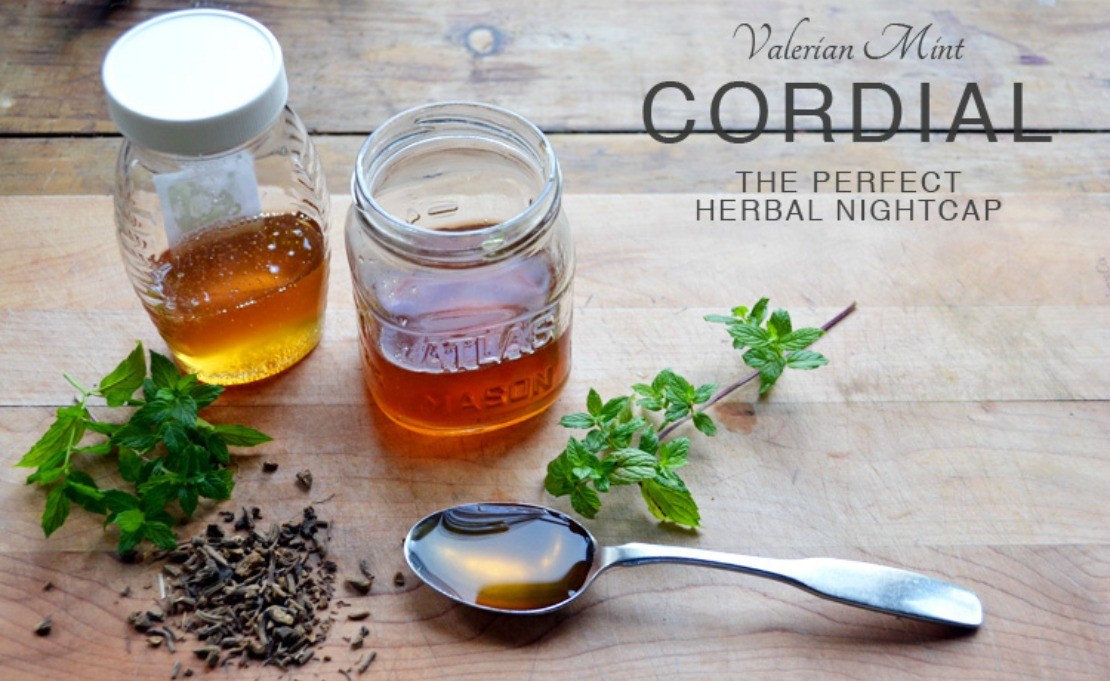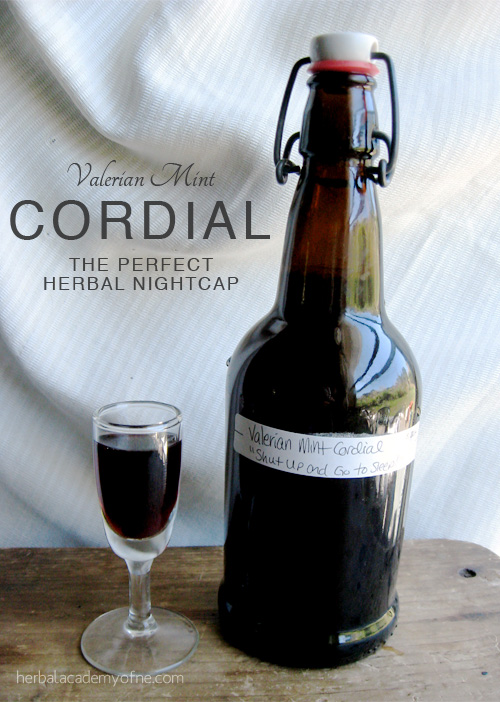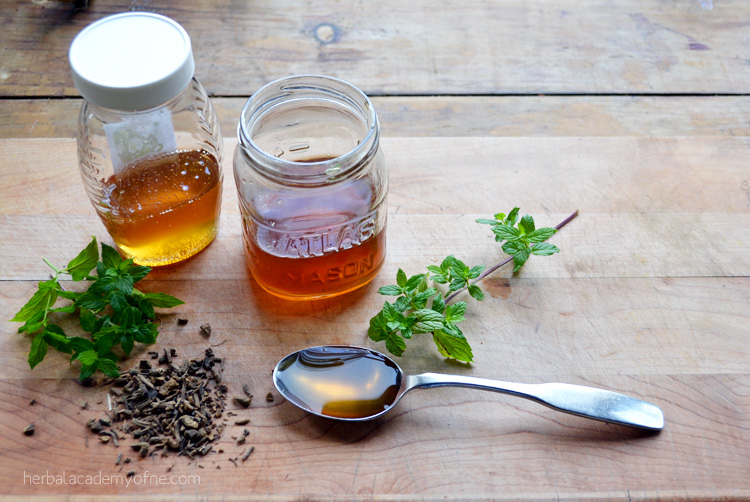
Valerian Mint Cordial: The Perfect Herbal Nightcap
No matter how hard I try to maintain a good sleep schedule, I often find myself lying awake, staring at the ceiling long after I should be asleep. My mind is either going over tomorrow’s plans, replaying today’s conversations over and over, or fixating on some other anxiety that I just can’t let go of. Exhaustion, stress and anxiety take a serious toll on our bodies, causing headaches, tense muscles, and even weakening our immune systems.
Getting a good night’s sleep is important, and valerian mint cordial is the perfect herbal nightcap to help summon the sandman.
Valerian
The cordial is rather simple, with only two main ingredients. Valerian is the main force in this recipe, keeping us covered for the sleepy side of the formula. Valerian root has been used throughout the centuries (learn more about that here) for its relaxing properties, and modern science has shown its sedative and anxiety-relieving effects. Anyone who is taking prescription depressants or kava should avoid using valerian as it can multiply the drowsiness to a potentially dangerous degree.
Now, another warning about valerian if you are unfamiliar with it: it is smelly. I’ve heard it often described as smelling like “stinky feet,” but don’t be dissuaded from trying it! I’m one of the weirdos out there who actually enjoys the smell of valerian. If you have cats, they’ll enjoy the smell, too! It makes them zonk out like catnip does. In fact, I have to store my valerian in a sealed glass jar to keep my kitty out of the herb cabinet.
If you are looking for a place to purchase valerian root, Mountain Rose Herbs has been our go to for the past several years. Here’s what you’ll want to get.
Mint
The second ingredient is our bedtime cordial is mint. Not only does the delicious, sharp flavor of mint help to make the earthy valerian more palatable, it is a medicinal powerhouse! Mint aids in easing the tummy and will help allow any stomach cramps or gas pains to pass. It can also help to open the sinuses, soothe nausea, and encourage relaxation during anxious moments.
This recipe first guides you through making the valerian and mint tincture, which takes six weeks, and then through making a honey simple syrup to sweeten the tincture into an herbal cordial.
Enjoy valerian mint tincture in small quantities, just a sip, or served in a 1 ounce cordial glass, but do not take it daily for more than two weeks, avoid if pregnant or breastfeeding, or if you have gallstones.
Valerian Mint Tincture
1 pint jar
1/8 cup dried valerian root (we buy it here)
1 cup dried mint (or 2 cups fresh)
Note: I’ve used both peppermint and spearmint with similar effects, although peppermint seems to work better with the valerian flavor.
- Add valerian root to the jar
- Cover with mint until the jar is just about full
- Fill the jar with vodka (or any preferred booze, brandy is nice!)
- Cover, label, and allow to sit for at least six weeks.
- After six weeks, strain the liquid into a bottle.
You now have a tincture! Congratulations. It is effective, but likely does not taste overly pleasant. This is where our dear friend honey comes into play.
Honey Simple Syrup
1 cup honey
- Heat the water to boiling.
- Remove from heat, add honey, stir to dissolve.
- Allow it to cool and add the mixture to the tincture a bit at a time until you like the taste.
Store any spare honey syrup in your fridge and use in teas, sauces, or anything else that needs a little sweetness!
Enjoy a good night’s sleep! Learn more about herbs by joining the Herbal Academy’s Introductory Herbal Course or Intermediate Herbal Course!

This post was written by Amber Shehan, the head pixie at Pixiespocket.com. She’s been eating things out of her yard and brewing them up as teas and tinctures for over 15 years now. Photos are provided and copyrighted by Amber Shehan, used with permission for this blog.
REFERENCES
Grieves, M (1931). A Modern Herbal. Retrieved October 2014 from http://botanical.com/botanical/mgmh/v/valeri01.html
Klesper, T (1999). Unsafe and potentially safe herbal therapies. Retrieved October 2014 from http://www.ncbi.nlm.nih.gov/pubmed/10030529
Wong, A (1998). Herbal remedies in psychiatric practice. Retrieved October 2014 from http://www.ncbi.nlm.nih.gov/pubmed/9819073
Foster, S (1996). Peppermint (Mentha piperita). Botanical Series, No.306. 2nd ed. Austin, Texas: American Botanical Council.








